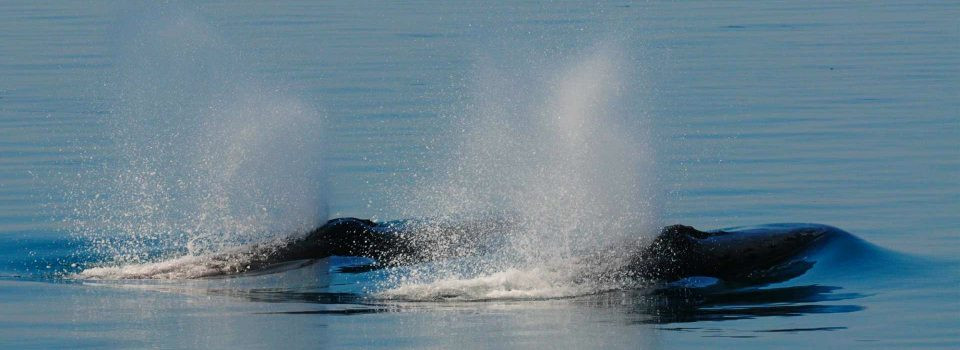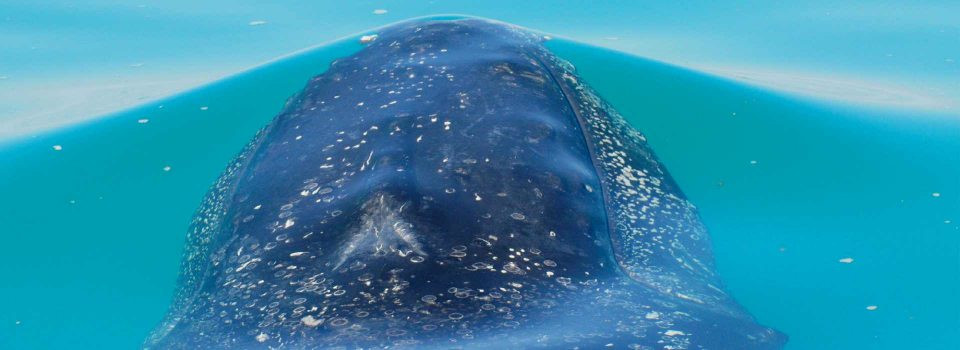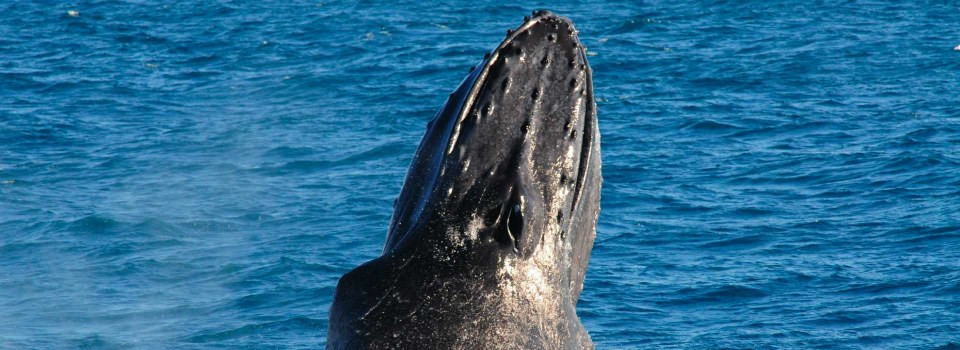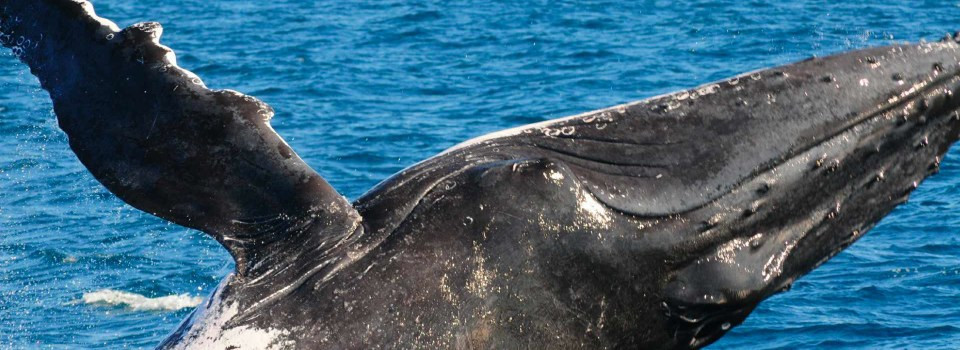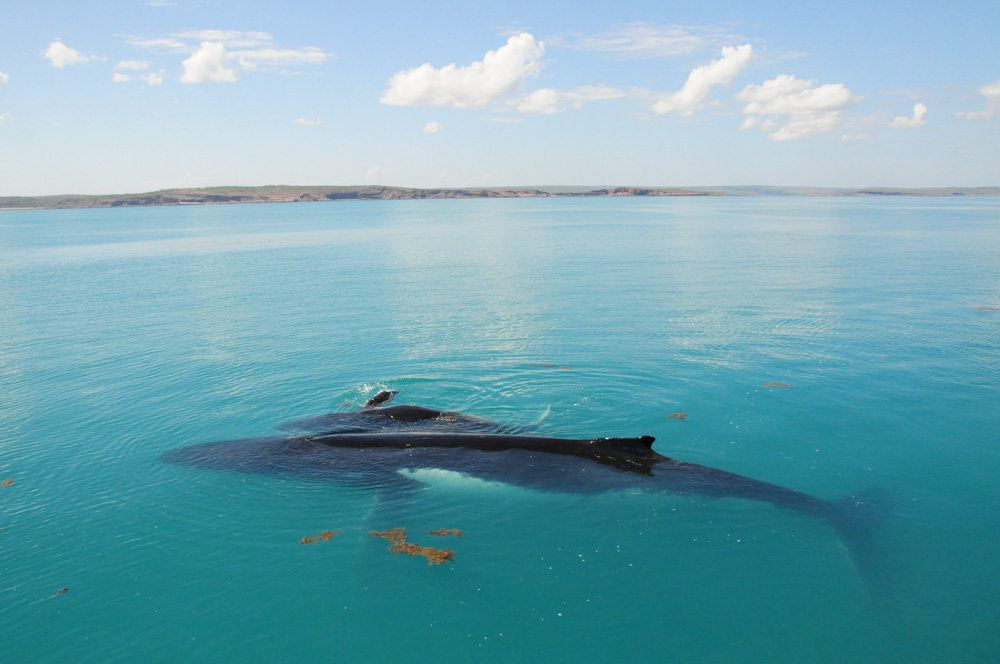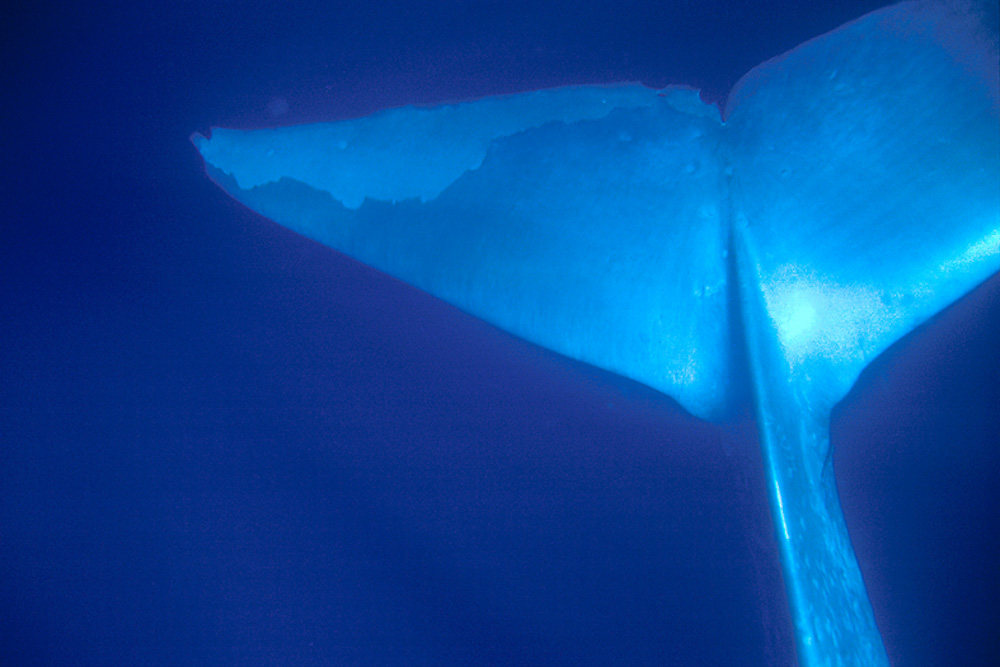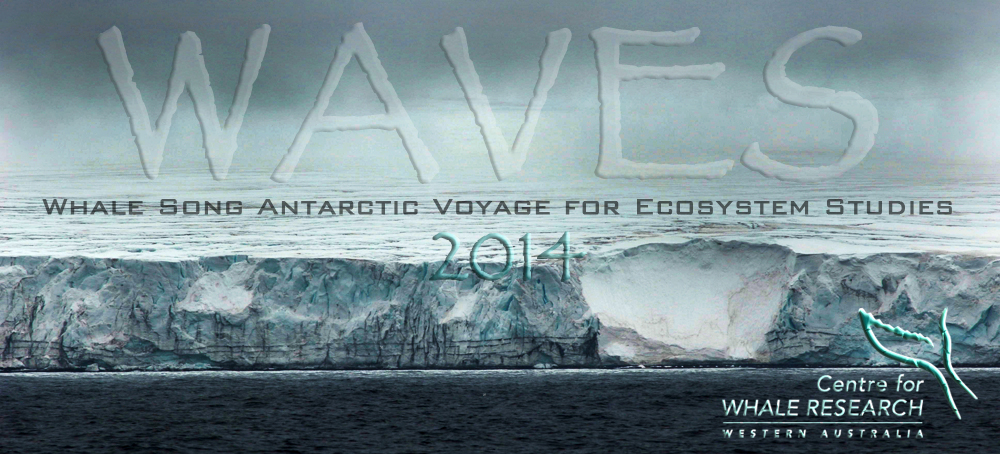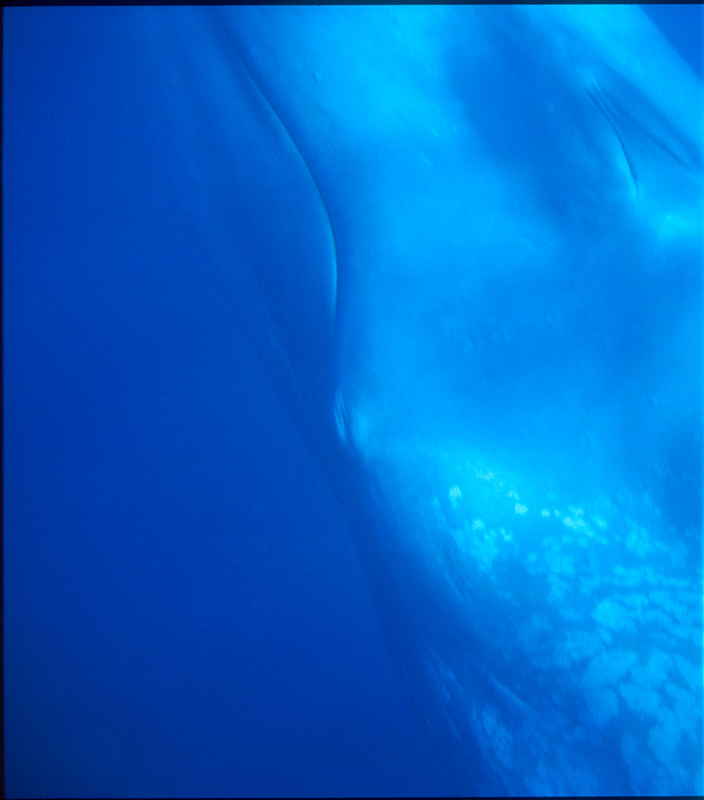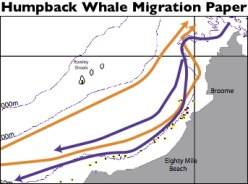Whale Biology – A Window into Our Oceans
Whales are the largest creatures on the planet, yet, like so many other fish, birds, and seals, they depend on tiny animals at the bottom of the oceans’ food chain to survive – krill. Krill, in turn, are the most plentiful protein source on the planet, and their abundance is tied to ocean health at a primary level – a system that in fact echoes global ecosystem stability. In other words, an ocean full of krill is a biologically stable ocean, and that means our world is coping with natural and human initiated climate changes. The question is, how do we monitor this vital system?
Our goal at CWR is to understand the health of our oceans by monitoring and protecting the population health of the largest animals on the planet – the great whales. Conserving their critical habitats ensures that the ocean, and indeed the planet, remains in good health.
CWR began with a humpback whale population measuring program in the Dampier Archipelago in 1990 and from research in the Kimberley, CWR guided the state government in the establishment of a new marine park for humpback whale calving/breeding grounds. The Lalang-garram/Camden Sound Marine Park is now in place in the Kimberley protecting vital calving/breeding grounds of the west coast humpback whale population. CWR research work expanded to include pygmy blue whales in 1999 in the Perth Canyon. This important feeding area for pygmy blue whales is now protected by the Perth Canyon Commonwealth Marine Reserve.
Based on RV Whale Song, CWR’s scientists conduct research all around Australia and into the Southern Ocean.
A mother and calf humpback whale pair rest in the calm waters of Lalang-garram/Camden Sound Marine Park in the Kimberley. Photo: Micheline Jenner AM.
Whale News
In the Queen’s Birthday 2018 Honour List announced on June 11, 2018, Curt and Micheline Jenner were each appointed as a Member of the Order of Australia (AM).
Their appointments have been granted “For significant service to conservation and the environment, particularly whale research in Western Australia”.
Curt and Micheline appreciate the support of their wonderful families in Australia and Canada in all of their endeavours. Over the course of 30 years, many people have been involved in this research, including their always-there friends, their dedicated Research Associates, Research Assistants and volunteers. Multiple projects and scientific papers have resulted from collaborative research with many scientific colleagues. They are delighted, thrilled and honoured to receive such an award.
Their work is not yet done for the whales. Globally, cetaceans are still under threat from many issues affecting their ocean home. Fish stock depletion, sound pollution from increased shipping volumes and elevated vessel speeds and oceanic garbage patches indicating 8 million tonnes are being dumped annually, are currently in the spotlight.
There are many creative solutions available. Each and everyone can all make small changes that will make a difference! Start today by rethinking your relationship with single-use plastic in every aspect of our lives. Let’s be green for the whales, the ocean and even to save ourselves and our beautiful planet.
Beautiful pygmy blue whale. Let’s be green for the blue whales. Photo: Micheline Jenner AM.
Fluke Up!
Sperm whales (Physeter macrocephalus) raise their huge strong flukes in a deep dive or sounding dive reaching depths of 3 km for up to 2 hours duration. At depth, they feed on squid which they “sound to death” with the powerful clicks of their echolocation.
Sometimes white ring-shaped scars from the squid tentacle suckers remain on the distinctively boxy head of these fascinating sperm whales. The dark wrinkled skin is mainly dusky grey-brown, long strips of which, peel off their bodies while swimming.
The broad, triangular-shaped dark tail flukes often have a ragged trailing edge with a deep notch, seen as the flukes are thrown vertically upon commencement of a sounding dive.
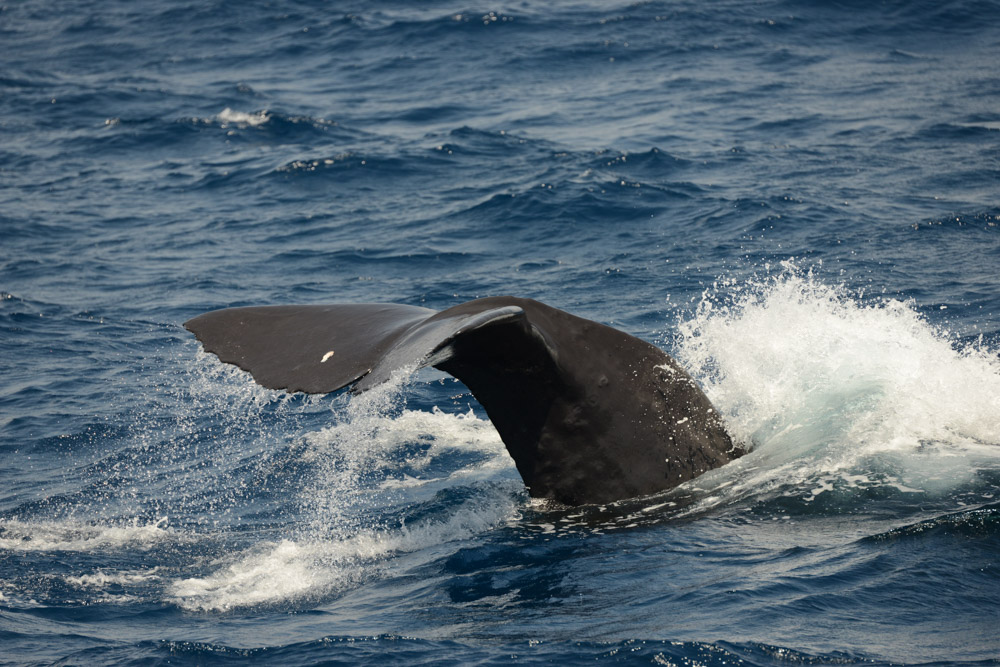
Down For An Hour. Make a cup of coffee or two, even lunch–this whale will be down for an hour! Photo: Micheline Jenner AM.
Follow us
Keep up to date with daily input about whale research and other marine science.
‘Like’ our CWR facebook
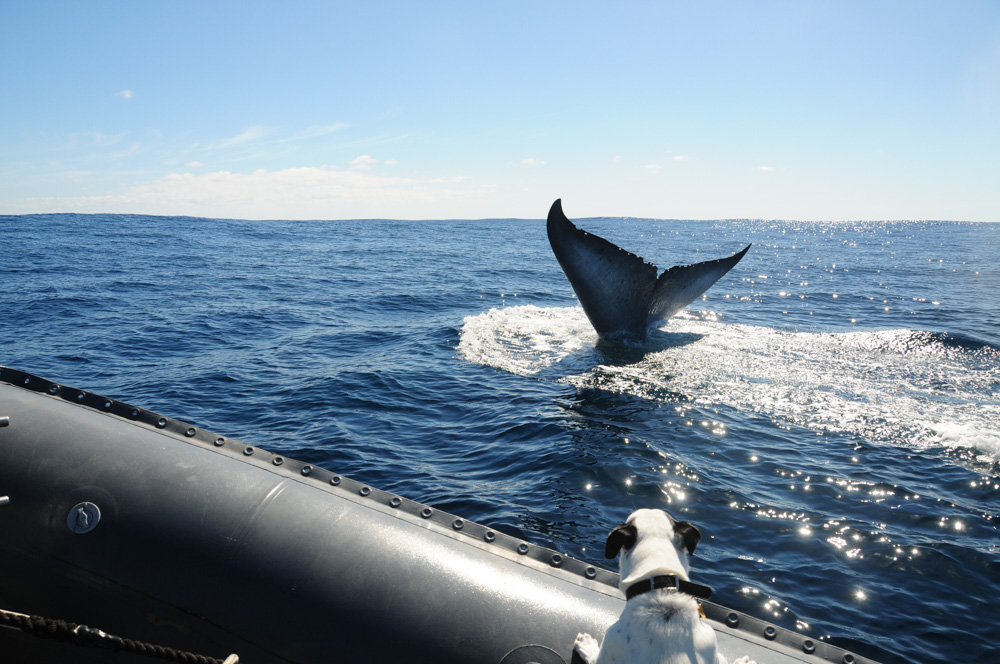
As a 22 metre long pygmy blue whale raised its’ 7 metre wide tail flukes in a sounding dive, Skipper was ecstatic! Photo: Micheline Jenner AM.


